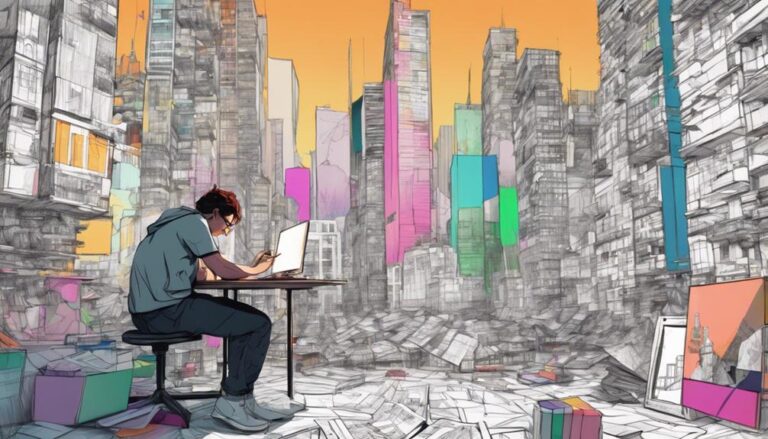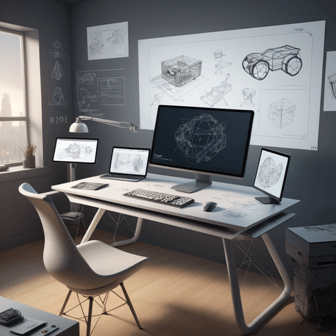2D Animation Pre Production Planning Process
You're about to start a 2D animation project, and a solid pre-production planning process is key to its success. First, define your project's scope and goals to prevent scope creep and costly revisions. Then, develop a compelling concept and script, and assemble a production team with the right skills and experience. Create a realistic project timeline and establish a budget that covers all aspects of production. By following these steps, you'll set your project up for success and avoid costly mistakes. Now, let's dive deeper into each stage to guarantee your project shines from start to finish.
Key Takeaways
- Define project scope and goals to establish boundaries, identify stakeholder expectations, and determine the desired outcome, timeline, and budget.
- Develop a concept and script by defining character arcs, storyboarding, and crafting a clear narrative structure that resonates with the target audience.
- Assemble a production team by identifying key department roles, considering team dynamics, and clearly defining each department's roles and responsibilities.
- Create a project timeline by identifying key milestones, establishing realistic deadlines, and outlining deliverables for each stage of the project.
- Establish a budget and resources by allocating funds for production, identifying necessary tools and personnel, and factoring in contingency funds for unexpected expenses.
Defining Project Scope and Goals
To guarantee your 2D animation project stays on track, you must first define its scope and goals, which will serve as a guiding light throughout the entire production process.
This pivotal step helps you establish project boundaries, ensuring everyone involved is on the same page. You'll need to identify what's included and excluded from the project to prevent scope creep and costly revisions down the line.
Clearly outlining stakeholder expectations is also essential.
Who are your target audience, clients, or investors? What do they want to achieve with this project? Understanding their needs and expectations will help you create a project plan that meets their objectives.
You'll need to ask questions like: What's the desired outcome? What's the timeline? What's the budget? By answering these questions, you'll create a solid foundation for your project, ensuring you're working towards a common goal.
A well-defined project scope and goals will save you time, resources, and headaches in the long run.
Developing Concept and Script
With a solid project scope and goals in place, you can now focus on developing a concept and script that brings your 2D animation project to life.
This is where you get to explore your creative vision and craft a compelling narrative that resonates with your target audience.
Three essential elements to weigh when developing your concept and script are:
- Character arcs: Define the emotional journeys of your characters, including their motivations, conflicts, and transformations. This will help you create relatable and engaging characters that drive the story forward.
- Storyboarding techniques: Visualize your script by creating a storyboard, which is a sequence of sketches that illustrate the pacing, camera angles, and action of each scene. This will help you refine your script, identify potential issues, and plan your animation sequences.
- Narrative structure: Craft a clear three-act structure, including a setup, confrontation, and resolution. This will provide a solid foundation for your story, ensuring that it flows logically and keeps your audience engaged.
Assembling the Production Team
Assembling the production team is a vital step in the pre-production planning process. You'll need to identify the key department roles required for your project, such as a director, producers, artists, and technical staff.
Consider the team dynamics that will drive your project's success. You want a team that's collaborative, communicative, and passionate about bringing your story to life.
When building your team, look for individuals with the right skills and experience. Consider their strengths, weaknesses, and how they'll fit into your project's workflow.
Clearly define each department's roles and responsibilities to avoid confusion and overlapping work. Establish open communication channels to guarantee everyone is on the same page.
A well-assembled team with a clear understanding of their roles will help you stay on track, overcome challenges, and deliver a high-quality animation that meets your vision.
Creating a Project Timeline
You've assembled a dream team, and it's time to harness their collective energy by creating a project timeline that outlines key milestones, deadlines, and deliverables.
This timeline serves as a roadmap for your project, ensuring everyone is on the same page and working towards common goals.
Three essential components to include in your project timeline are:
- Key project milestones: Identify pivotal stages in your project, such as script finalization, character design completion, and animation testing.
- Realistic deadlines: Establish achievable deadlines for each milestone, allowing for schedule flexibility in case of unexpected delays.
- Deliverables: Clearly define what needs to be accomplished at each stage, ensuring your team understands what's expected of them.
Establishing Budget and Resources
Allocating financial resources and identifying necessary tools are essential steps in preparing your 2D animation project for success.
You'll need to establish a budget that covers all aspects of production, from concept to delivery. Start by creating financial projections, outlining projected income and expenses. This will help you determine how much you can afford to spend on resources like software, equipment, and talent.
Next, focus on resource allocation. Identify the tools and personnel you'll need to bring your project to life. Consider the cost of software, hardware, and other equipment, as well as the fees for freelancers or full-time staff.
Don't forget to factor in contingency funds for unexpected expenses. By allocating your resources wisely, you'll be able to stay within budget and guarantee your project stays on track.
Frequently Asked Questions
What Software Is Best for Creating 3D Animation Storyboards?
When creating 3D animation storyboards, you'll find FrameForge, Storyboard Pro, and TVPaint Animation ideal for bringing your animation sketches to life. These storyboard apps offer intuitive tools to visualize and refine your project's pacing and flow.
How Do I Ensure Consistent Character Design Throughout Production?
To guarantee consistent character design, you'll create a character bible, documenting their traits, expressions, and costumes. Additionally, develop model sheets showcasing their design from various angles, certifying a unified look throughout your animation.
What Is the Ideal Ratio of Artists to Management Staff?
You'll want to strike a balance between artist workload and department hierarchy to guarantee efficiency. Aim for a 3:1 or 4:1 artist-to-management staff ratio, allowing for effective guidance without overwhelming individual contributors.
Can I Reuse Assets From Previous Projects to Save Time?
You can definitely reuse assets from previous projects to save time, but first, take stock of your asset inventory and update your project templates to guarantee consistency and efficiency in your workflow.
How Do I Protect My Project From Intellectual Property Theft?
To safeguard your project, you'll want to establish legal agreements with collaborators, ensuring confidentiality and non-disclosure terms. Secure collaboration tools with access controls and encryption will also help prevent intellectual property theft.
Conclusion
You've navigated the essential steps of the 2D animation pre-production planning process.
By defining your project's scope and goals, developing a solid concept and script, assembling a dream team, creating a realistic timeline, and establishing a budget and resources, you've set yourself up for success.
Now, it's time to bring your vision to life.
Stay organized, stay focused, and get ready to create something amazing!





